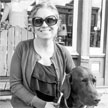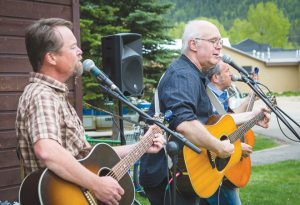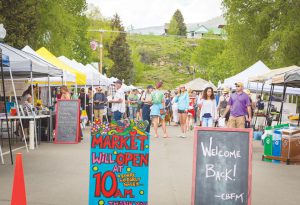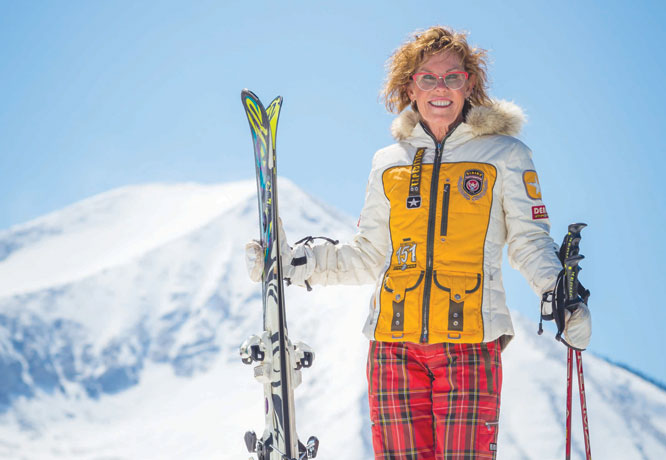Looking for community support and input
By Alissa Johnson
As a child growing up in Taos, N.M., Conor Hagen listened to his parents tell stories about his birthplace, Crested Butte. He lived in town for three years and moved away at a young age, and he was transfixed by his parents’ tales of the mountain town and its transformation from a mining community to a ski town.
“These stories always bewildered me and showed me that there was a more interesting way to live life than the standard norm,” Conor said. “People would come to Crested Butte, and they just sort of did whatever they wanted. They had freedom and the independence to lead the lives they wanted to, and out of that emerged a community of people who were thick as thieves and didn’t favor things like greed. They favored things like community and friendship.”
A filmmaker whose work has screened at festivals across the country, Conor has always wanted to make a film about that era in Crested Butte, telling its stories and also examining the alternative subculture that grew out of the 1960s and ’70s. He has, in fact, already made a film about Crested Butte, BEYOND MIDNIGHT: The Grand Traverse, which tells the story of the 40-mile backcountry race that leaves Crested Butte at 12 a.m. and heads to Aspen.
Enter Alison Batwin (Ali), who has produced films around the world, from Prague to San Francisco, and the new film project began to take shape. She has been coming to Crested Butte with her family for 15 years and was hooked by Conor’s vision.
“I’ve worked in film all over the world, and I’m always looking for a project that means a lot to me,” she said.
The pair founded Red Lady Films, and they are now fundraising and connecting with local characters who were part of Crested Butte during the ’60s and ’70s. It will come as no surprise to locals that the trailer for the project features the likes of history buff Duane Vandenbusche and longtime local George Reinhardt.
The pair has also made connections with the growing Crested Butte Film Festival and the Crested Butte Heritage Museum. The latter has provided them with access to its historical records and artifacts, and is also acting as Red Lady Films’ fiscal sponsor. Donors can contribute to the project through the museum and have their donation be tax deductible.
“They are super supportive, both the previous director [Glo Cunningham] and now Shelley [Popke]. They really believe in our mission,” Ali said.
“The Crested Butte Mountain Heritage Museum is excited to be working with Red Lady Films on this documentary. Our partnership is a wonderful way to advance the Museum’s mission ‘to preserve and share the uniquely diverse cultural history of the Gunnison Valley. We make the past a living part of the future,’” said museum director Shelley Popke.
Ali and Conor expect to complete fundraising this summer and into the fall, with filming starting this winter and into next summer. In addition to raising funds, they hope to connect with locals who are interested in the project, have archival materials like film or photos, or have stories relevant to the project.
“We’re really trying to utilize a lot of archival assets. It’s going to make the film so much richer, so…, hopefully they’ll come forth and lend us some of their resources. Someone could have a reel of 8mm film from 1965 hidden away on a shelf,” Conor said.
He admits that there is a nostalgic component to the project—he has always loved the attitudes and the mentalities of the ’60s, including the music and the sort of reckless abandon. It provides an interesting contrast to what he sees going on now.
“It’s technology and progress and development, and most of our communities are online. I feel like I’m somewhat radical in my feelings about this; while I also feel technology is good, we’re constantly moving away from solid, strong, communities that are human and integrated and more toward these communities that are more disparate and based on some sort of digital community. It doesn’t feel as authentic,” he said.
At the same time, however, he’s careful to point out that he and Ali are not naïve or placing the ideals of the ’60s on a pedestal. They know that the same people who helped transform Crested Butte during the ’60s and ’70s and eschewed greed had to and wanted to make money in some form. Many went on to become entrepreneurs and business owners and raise families. Yet at the same time, they made decisions about the town and the natural environment to preserve the character of Crested Butte. That included disallowing conglomerates and corporations, and protecting the natural environment.
“That’s also part of story we want to tell, to start with the transition from miners to Crested Butte becoming a ski town, and then, how does one walk the line between progress and development, and maintaining the culture that is Crested Butte,” Conor said.
In many ways, that same question is being asked today as Crested Butte manages the growth of tourism, exposure from events like Whatever, USA, and maintaining the feel of the town and the backcountry at the same time.
“There is a conversation going on in Crested Butte right now but also everywhere. We want to be sure to relate this film to a larger audience and tell the bigger story too, because it is a conversation happening everywhere,” Conor said.
While Hagan is currently based in San Francisco and Ali in Boulder, the pair return to Crested Butte frequently and were just in town over the 4th of July weekend. To make the film a reality, they’ll be returning to town often and are open to traveling wherever they need to go in order to conduct the interviews that will make the film richer.
As Ali pointed out, they plan to travel to Florida if it makes it possible to connect with Dick Eflan, a founder of the local ski resort who now lives in Florida. First, however, they’re looking for the community’s help, both through financial support and through ideas, footage, and photos. It’s that local participation that will make a film about Crested Butte truly representative of the town.
“Any footage we can get will be awesome and make that time come to life… We really feel that these stories are important to preserve an historical record,” Ali said.
Learn more about the project or connect with Ali and Conor at redladyfilms@gmail.com or redladyfilms.com. There, you’ll also find information about how to donate to the project, which can be done through the Crested Butte Heritage Museum website, crestedbuttemuseum.com.
 The Crested Butte News Serving the Gunnison Valley since 1999
The Crested Butte News Serving the Gunnison Valley since 1999











